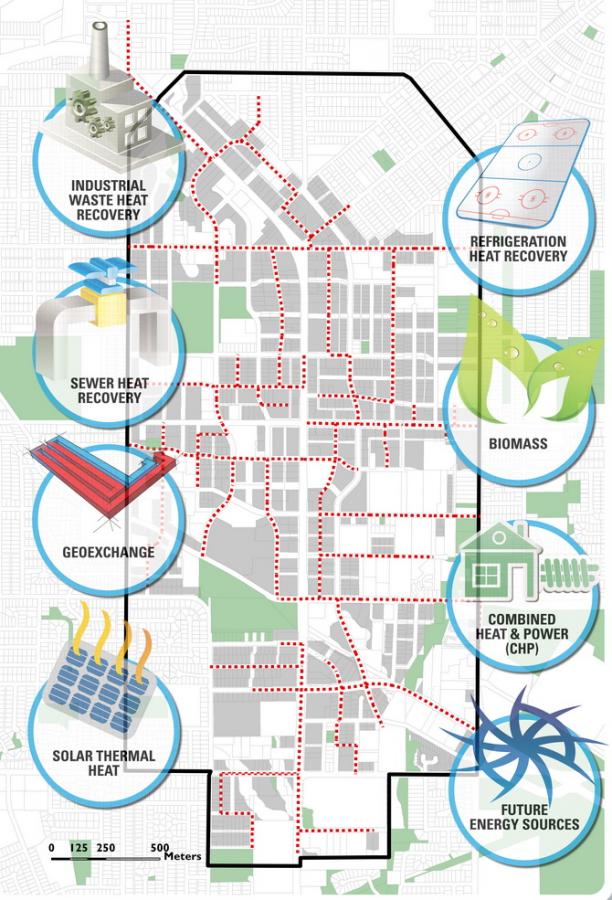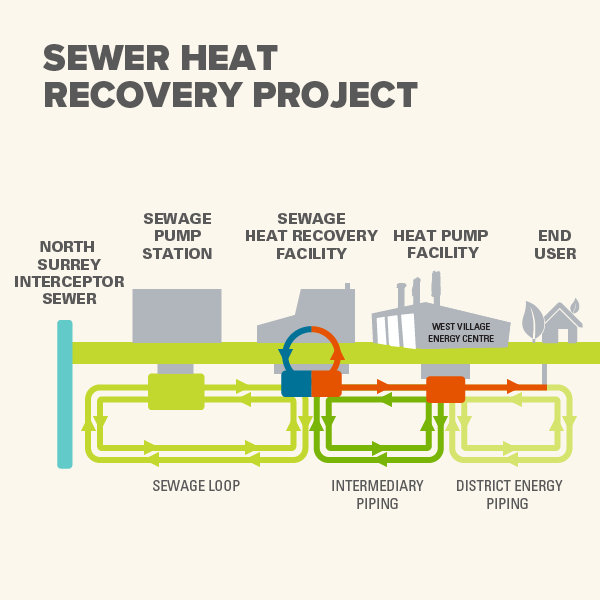District Energy Strategy
Shaping a sustainable, renewable energy future.
Surrey’s district energy strategy is being developed over three phases of growth:
- Initially, temporary energy centres are installed in multiple areas within City Centre.
- As demand for heat energy grows, temporary centres are replaced with permanent centralized energy centres, like the West Village Energy Centre.
- Further investment will take place to integrate the use of large-scale renewable energy sources.
Low Carbon, Long-Term Vision
District energy is an essential component of the City of Surrey’s plan to reduce GHG emissions in new in buildings in support of the City’s 2019 Climate Emergency Declaration and the Official Community Plan target of net-zero GHG emissions by 2050.
Integrated Hot Water District Energy System
The long-term vision includes an integrated hot water district energy system covering the entire City Centre area. Over time, this will include multiple energy centres with a range of low-carbon renewable energy sources, including geothermal energy, biomass from local clean wood waste, waste heat from various sources, and renewable natural gas from the Surrey Biofuel Facility.
5-year Plan
Surrey City Energy is planning a new facility to tap into a sustainable energy source in our sewers.
The sewer system has hot water from household dishwashers, showers, and sinks. The new facility will use heat pumps to extract heat from the sewer system. This will heat the water in the district energy network.
The facility is expected to come online in 2025-2026 and will:
- supply up to 70% of the District Energy system’s heating requirements
- reduce up 15,000 tonnes of GHG emissions per year
Learn more about a similar sewer heat recovery system in City of Vancouver’s False Creek Neighbourhood Energy Centre.
This project includes four elements:
- North Surrey Interceptor Sewage Pump Station that conveys sewage from the North Surrey Interceptor to the adjacent heat recovery facility
- Sewer Heat Recovery Facility which will include sewage screening equipment, wide-gap heat exchangers for screened sewage, and distribution pumps to convey heated water to the Heat Pump Facility
- Ambient Distribution Piping System, approximately 2.5km long, to transport heat recovered from the sewer to the West Village Energy Centre
- Heat Pump Plant at West Village Energy Centre that upgrades the ambient heat from sewer to meet the higher temperature requirements of the district energy system
30-year Plan
Surrey City Energy has a 30-year plan to build out its City Centre network. It will include three high density nodes, centered around existing rapid transit stations (Surrey Central, King George and Gateway). A separate district energy network will be constructed at each node, and eventually all three networks will be connected to create an integrated system.

